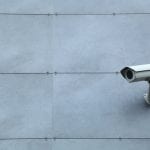 My Learning Network looks like this.
My Learning Network looks like this.
It certainly is connected much like the links between the neurons (hopefully) in my brain.
How has your network changed the way I learn?
I feel as though I have always learned by way of a network only now the network includes the Internet and Web 2.0. The latter has given me much faster access to information in order to synthesize my thoughts and new knowledge quicker. It has also helped me make more connections between other people's opinions and related information. I believe that with this new abundance of information, it has also make me more skeptical and critical. It provides me a variety of ways to approach the same problem or develop meaning.
Which digital tools facilitate me best?
Undoubtedly, as a newbie to many Web 2.0 programs, I would say I get the most out of search engines which lead me to professional articles, blogs and websites written by more knowledgeable/more experienced/differently opinionated others.
How do I gain knowledge when questions arise?
It really depends on the question I'm seeking to answer. A personal question will more likely go through my friends and family in live conversations or by telephone, email or social networking sites. More intellectual or complex questions would start with the research of professional articles, blogs and websites written by more knowledgeable others. I like to try and access experts whose opinions differ in order to formulate a more rounded opinion of my own. I might then go to colleagues blogs and share my questions with them to get a slightly more personal or "word on the street" take on it. More practical knowledge (that's not technology related) I would definitely seek out a mentor's physical modeling. However digital skills I might be able to access by watching a Youtube video for example.
How does my PLN support or refute the central tenets of connectivism?
Siemens posits the following principles of connectivism:
- Learning and knowledge rest in diversity of opinions.
I collect views from various sources. I deliberately seek differing opinions to expand possibilities and be open-minded.
- Learning is a process of connecting specialized nodes or information sources.
My PLN involves these connections. These connections may be online or not. My connections are diverse and yet not exclusive.
- Capacity to know more is more critical than what is currently known.
Not sure about this one. Are we truly learning more or just the same/similar stuff in different ways? Certainly learning must involve some kind of advancement associated with the learner’s personal ZPD.
- Nurturing and maintaining connections is needed to facilitate continual learning.
My PLN refute this as I am almost constantly searching for new and diverse connections not necessarily simply maintaining and nurturing current ones.
- Ability to see connections between fields, ideas, and concepts is a core skill.
This is indeed crucial to successful use of my PLN. Without being able to recognize connections, one could get lost surfing for hours and not moving forward. This probably happened a lot more before web 2.0 applications which give us the opportunity to share, collaborate, synthesize and socialize our knowledge.
- Currency (accurate, up-to-date knowledge) is the intent of all connectivist learning activities.
I don’t think it has to be current so long as it still applies to real-world situations. A lot can be learnt from the past and, as a social constructivist I believe that much of what we know is is dynamic and fluid. What is “accurate” knowledge? “Up-to-date” is a relative term.





Synthesize is a great word to how to describe how we use our mind maps to process information. In reviewing the visual arrangement of the methods you use for joining or combining technologies to create new answers, it is evident that you care about the results and use a variety of processes to find valuable information.
ReplyDeleteBefore you set your fingers to the keyboard to draw your map, were you aware of the design connections you were mapping or have they just evolved without conscious interaction?